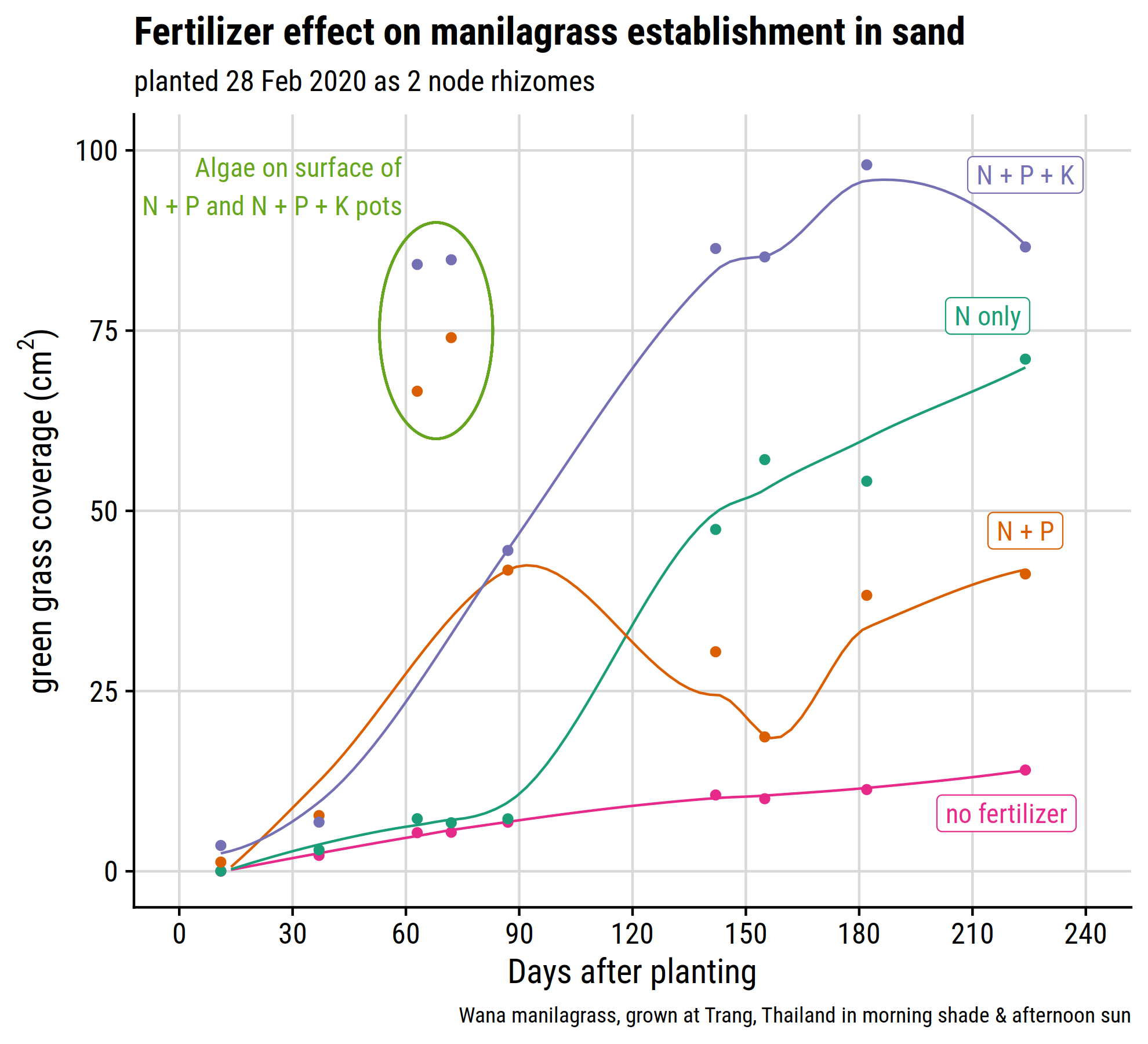
On February 28, I took Wana—a fine-bladed putting green type manilagrass—rhizomes and cut to a two node length. Then I planted these cut rhizomes, each with two tiny plants on them, in the center of sand-filled pots.
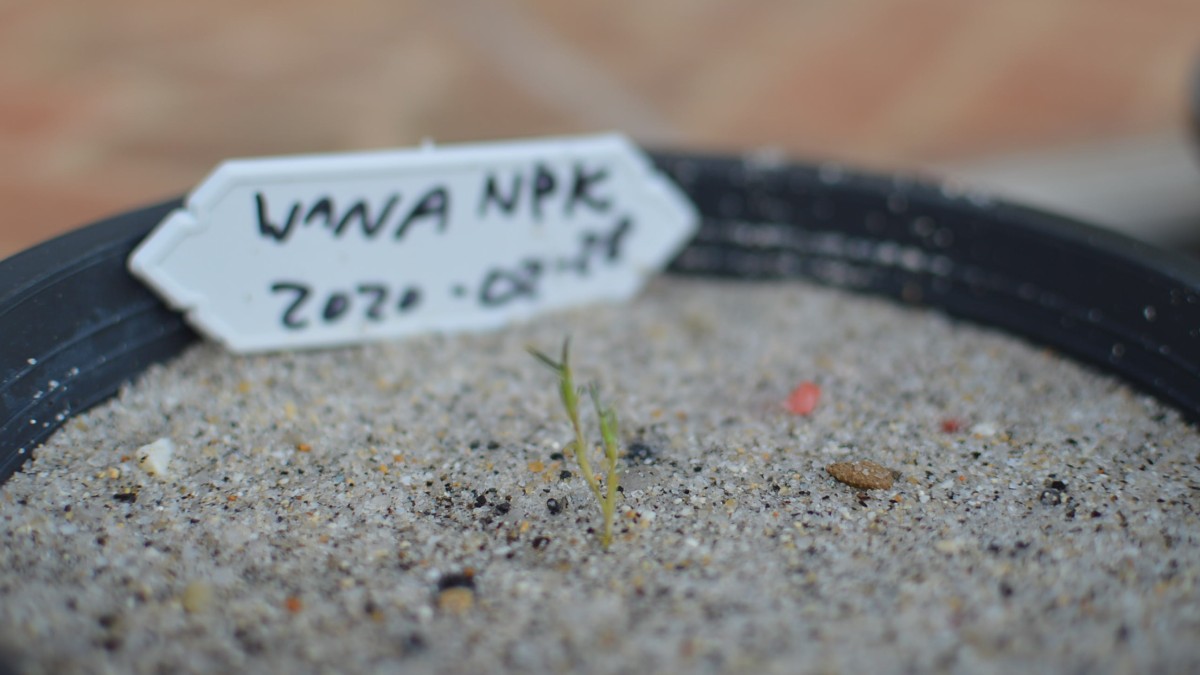 The pot fertilized with N, P, and K on 7 March 2020, eight days after planting.
The pot fertilized with N, P, and K on 7 March 2020, eight days after planting.
The sand had a starting pH of 6.4 and Mehlich 3 extractable P and K of 17 and 20 mg/kg, respectively.
I had been applying different fertilizers to grasses during establishment at #ATC南店 to demonstrate two things.
-
That zoysia does respond to N fertilizer when grown from sprigs.
-
That zoysia grown from sprigs also responds to P and to K when the grass requirement exceeds the soil’s supply.
I used ImageJ to identify the green leaf coverage shown in the chart at the top of this post.
This is the pot fertilized with N + P + K on August 24, 178 days after planting.
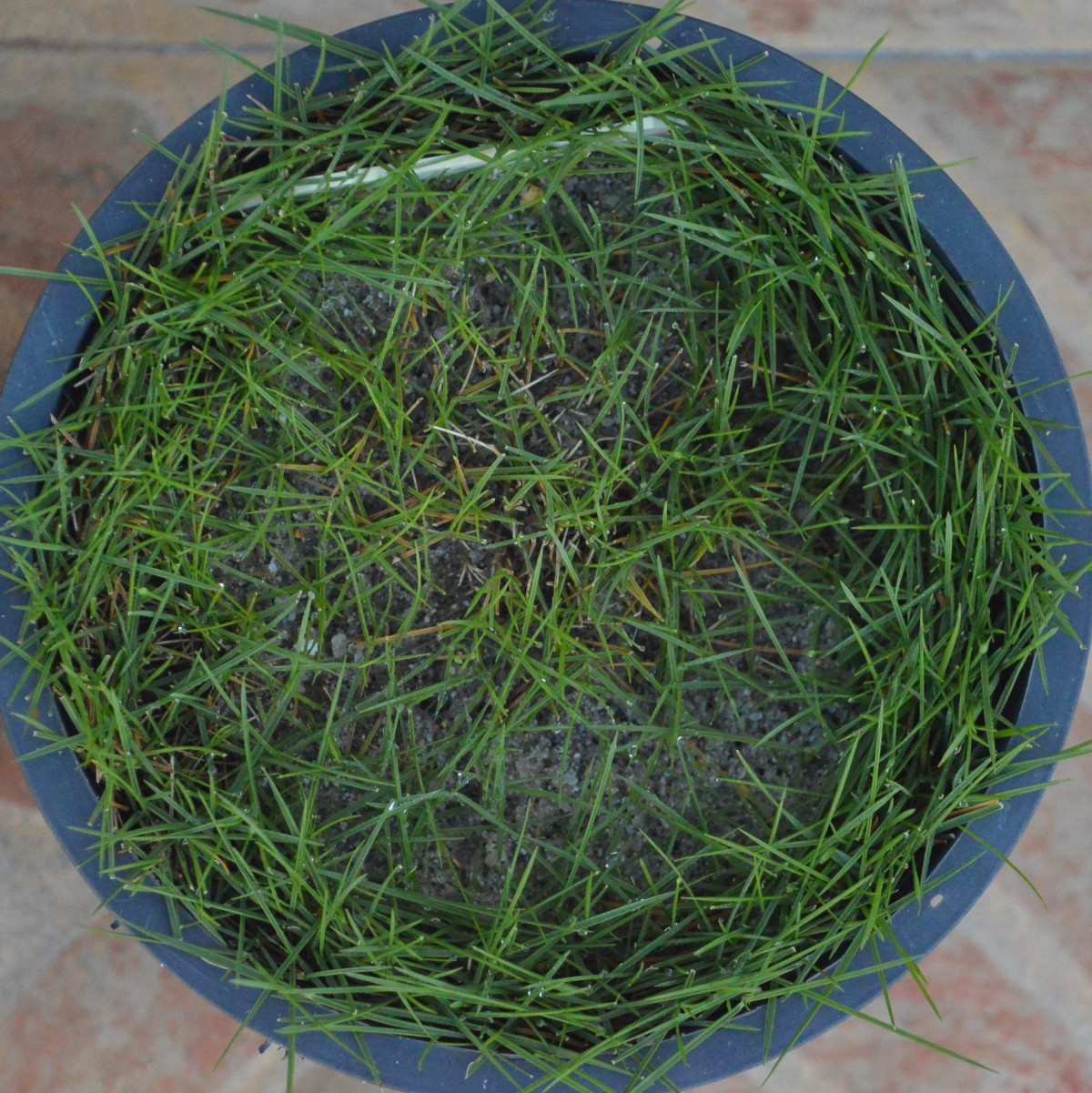
The pots I used were 13.5 cm in diameter. ImageJ starts with the images measured in pixels, and I drew a line and specified that the length was 13.5 cm, so the measurements of green leaf area could be reported in cm2.
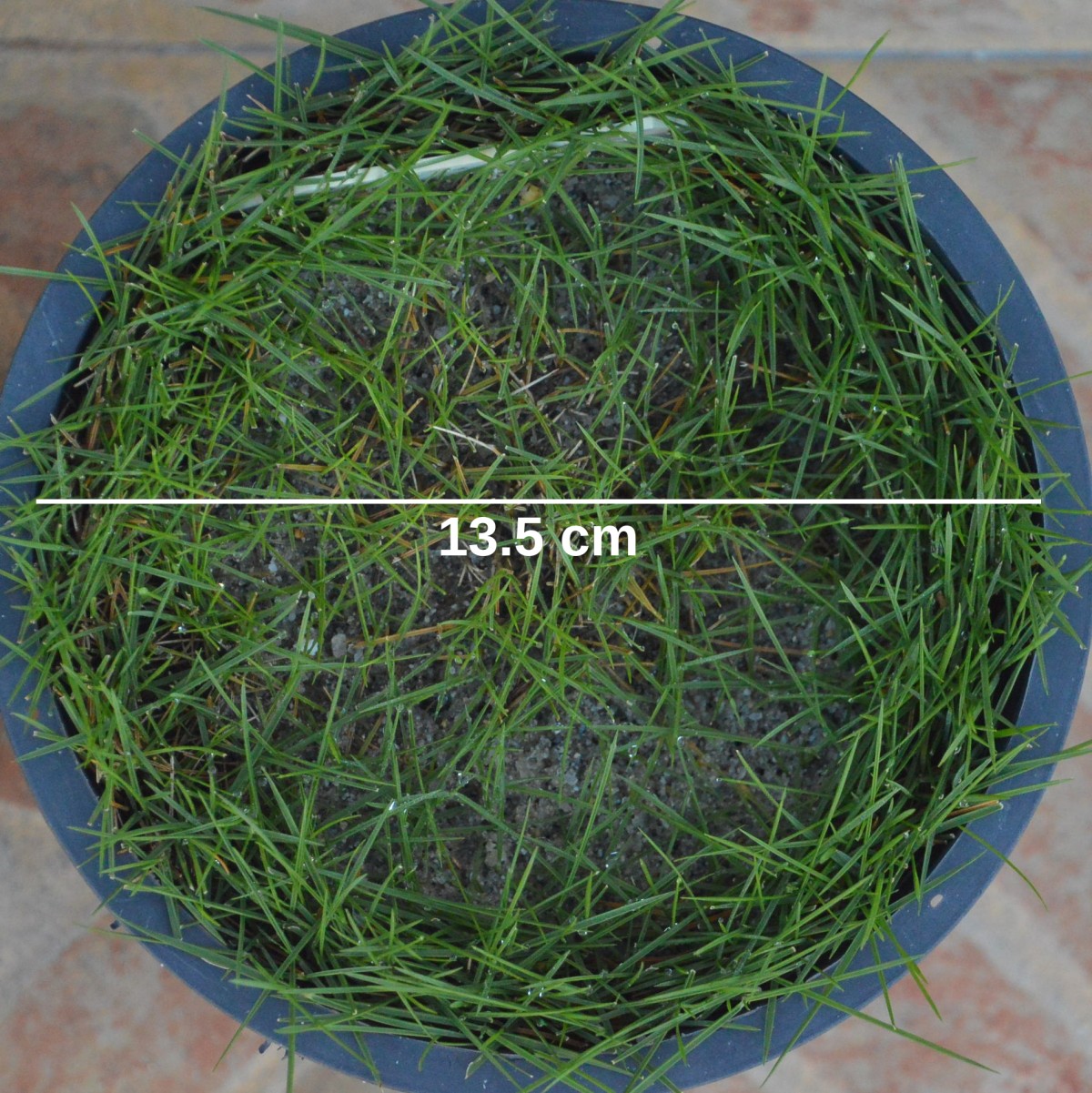
Then I used the color threshold settings to selectively identify the green leaf tissue, which is highlighted in red in the image below. For this set of images, I selected portions of the image with hue from 40 to 100, saturation from 80 to 255, and brightness from 45 to 255.
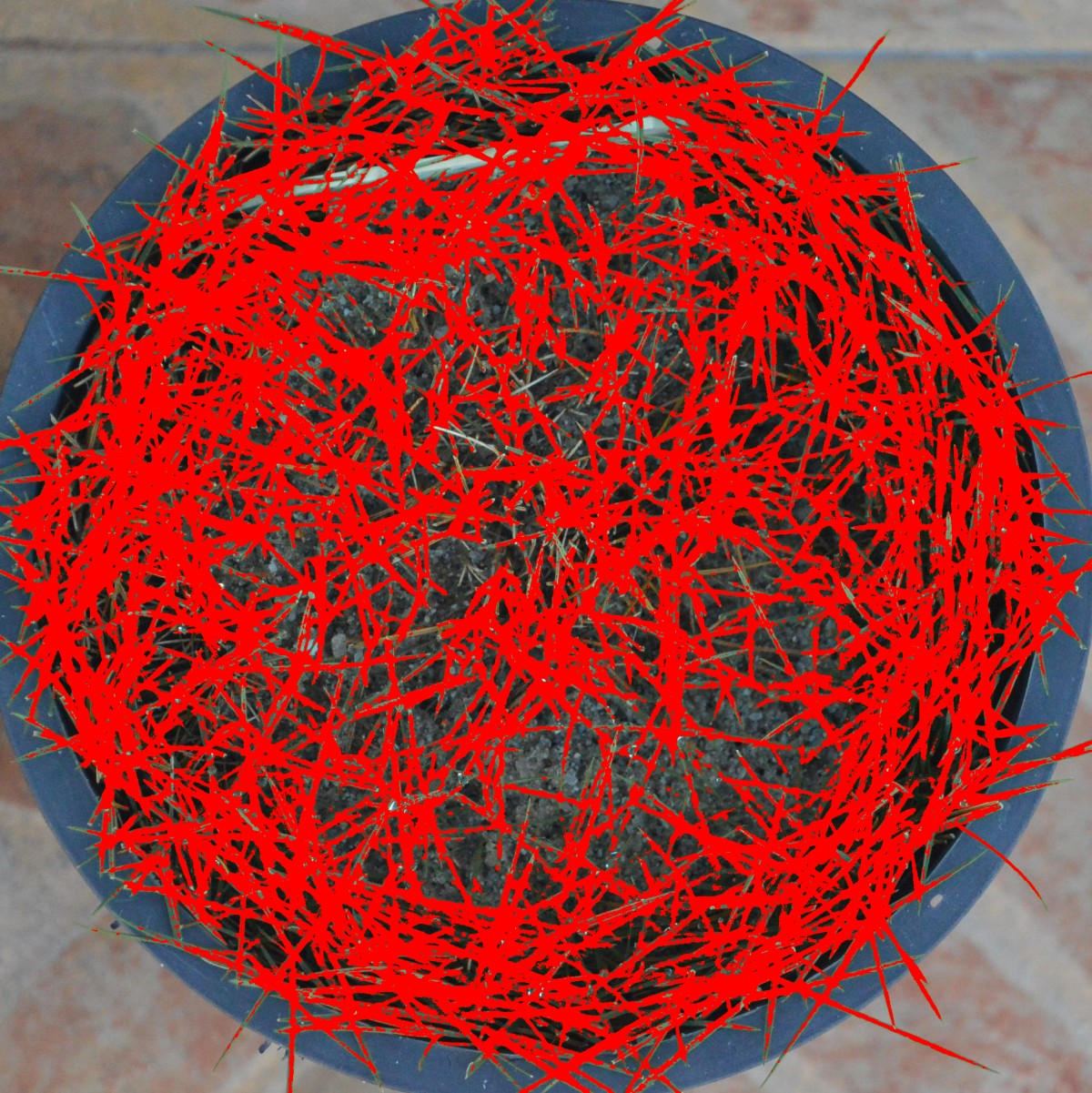
After identifying the portions of the image meeting those criteria, I selected those pixels, and got a nice image of the green parts of the grass with yellow borders.

Then I made a few more clicks to get the simple image of a white background with any of the selected pixels in black.
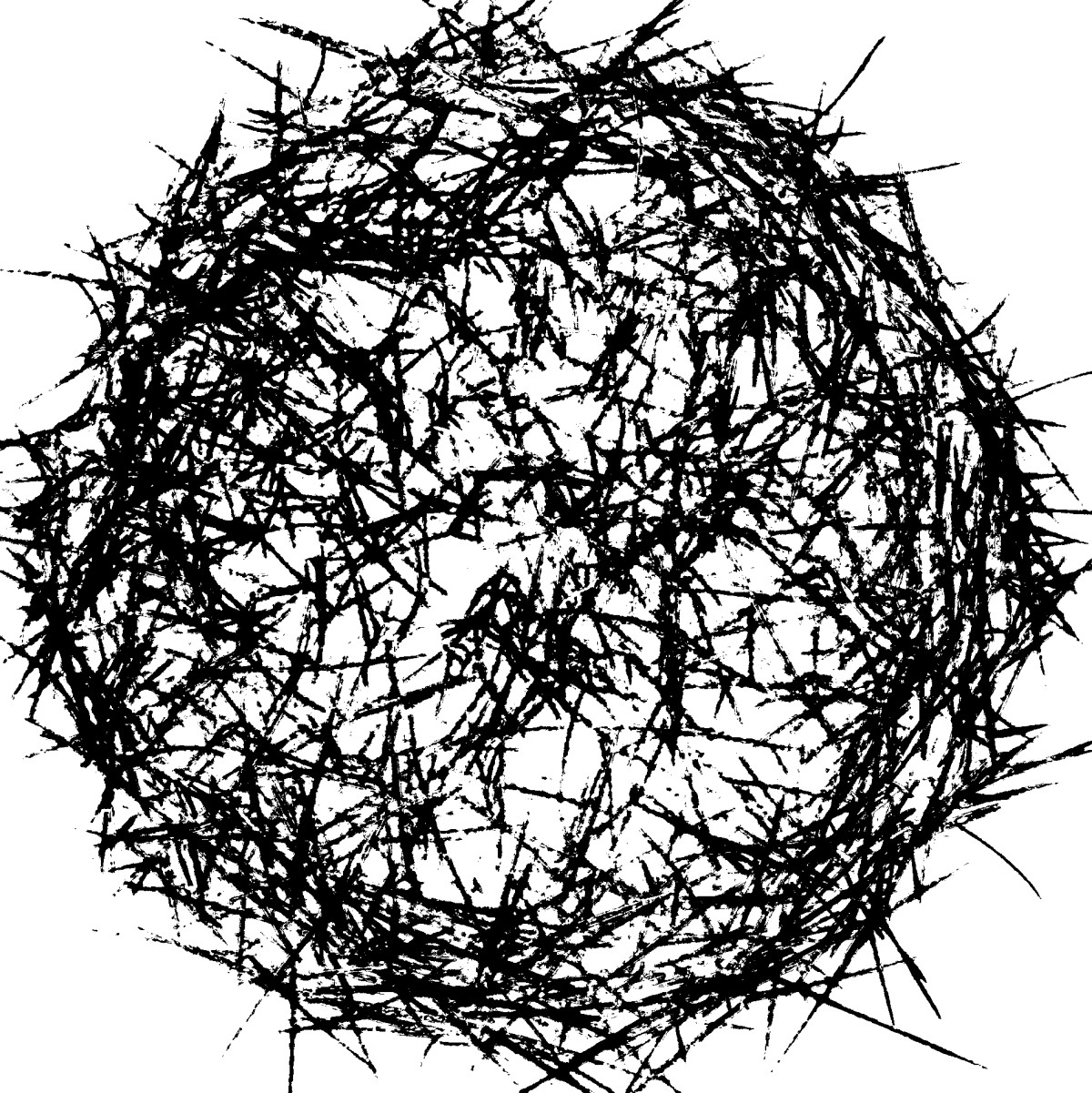
This timeline sequence shows a set of nine images from the pot receiving N.
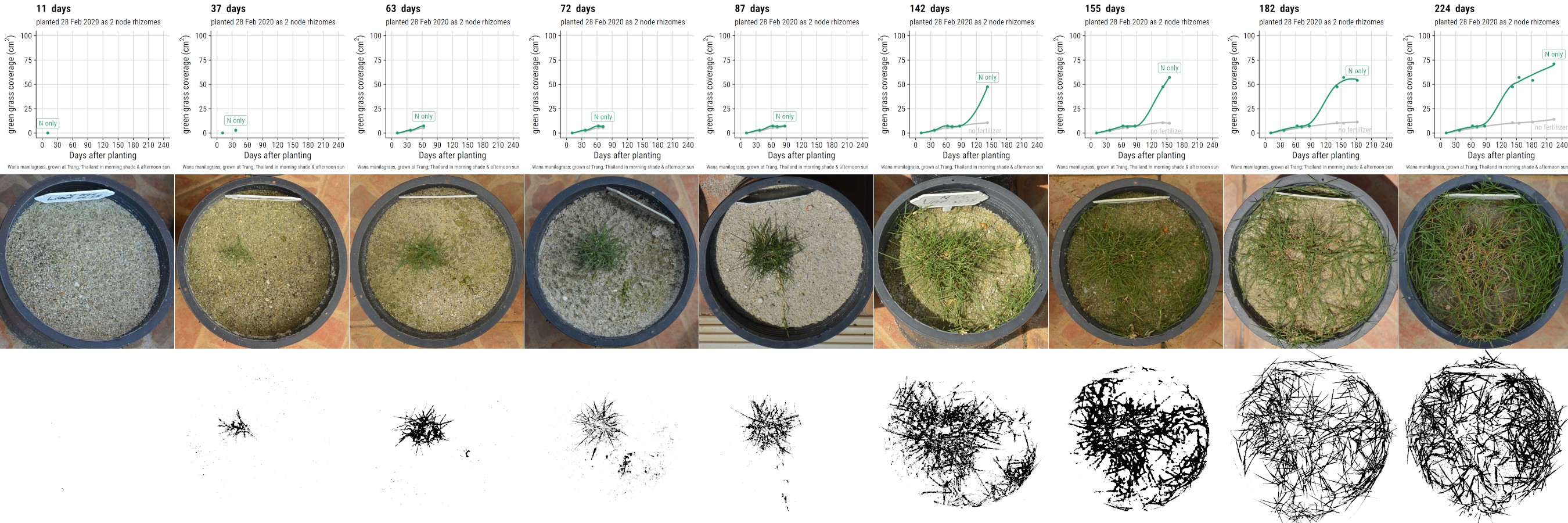
For more about this, see: